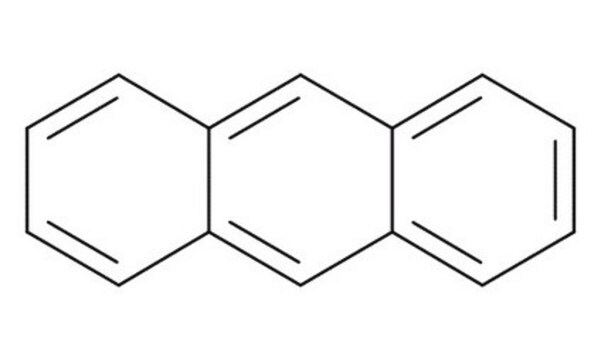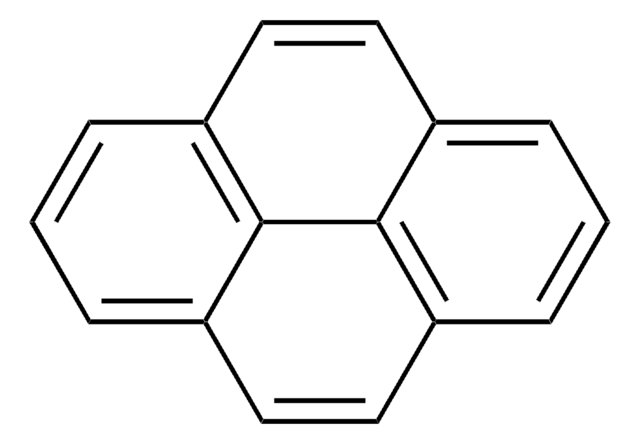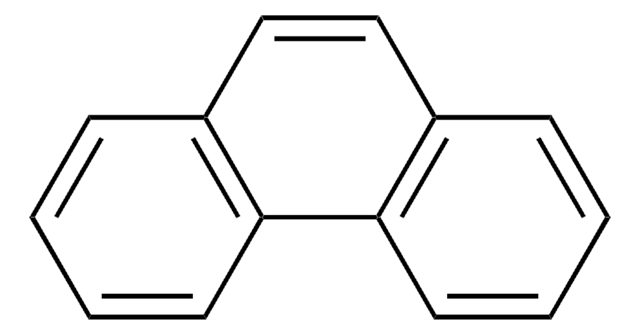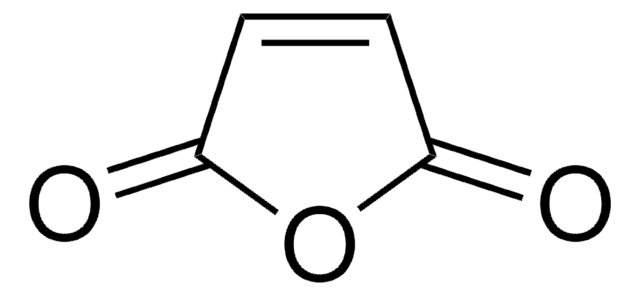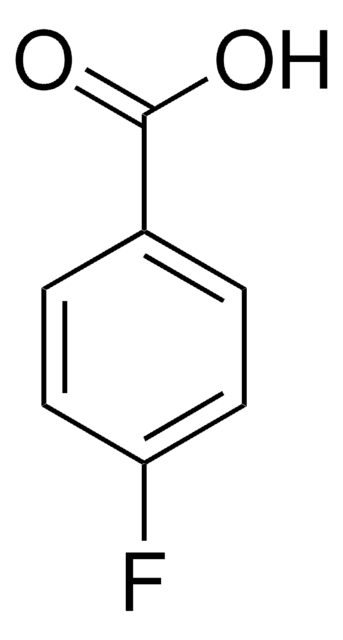Key Documents
A89200
Anthracene
reagent grade, 97%
Synonim(y):
Anthraxcene, Paranaphthalene
About This Item
Polecane produkty
klasa czystości
reagent grade
Poziom jakości
gęstość pary
6.15 (vs air)
ciśnienie pary
1 mmHg ( 145 °C)
Próba
97%
Postać
flakes
powder or solid
temp. samozapłonu
1004 °F
tw
340 °C (lit.)
mp
210-215 °C (lit.)
rozpuszczalność
alcohols: soluble
benzene: soluble
chloroform: soluble
hydronaphthalenes: soluble
supercritical carbon dioxide: soluble
ciąg SMILES
c1ccc2cc3ccccc3cc2c1
InChI
1S/C14H10/c1-2-6-12-10-14-8-4-3-7-13(14)9-11(12)5-1/h1-10H
Klucz InChI
MWPLVEDNUUSJAV-UHFFFAOYSA-N
informacje o genach
human ... CYP1A2(1544)
Szukasz podobnych produktów? Odwiedź Przewodnik dotyczący porównywania produktów
Opis ogólny
Zastosowanie
Hasło ostrzegawcze
Warning
Zwroty wskazujące rodzaj zagrożenia
Zwroty wskazujące środki ostrożności
Klasyfikacja zagrożeń
Aquatic Acute 1 - Aquatic Chronic 1 - Eye Irrit. 2
Kod klasy składowania
11 - Combustible Solids
Klasa zagrożenia wodnego (WGK)
WGK 2
Temperatura zapłonu (°F)
249.8 °F - closed cup
Temperatura zapłonu (°C)
121.0 °C - closed cup
Środki ochrony indywidualnej
dust mask type N95 (US), Eyeshields, Gloves
Wybierz jedną z najnowszych wersji:
Masz już ten produkt?
Dokumenty związane z niedawno zakupionymi produktami zostały zamieszczone w Bibliotece dokumentów.
Klienci oglądali również te produkty
Nasz zespół naukowców ma doświadczenie we wszystkich obszarach badań, w tym w naukach przyrodniczych, materiałoznawstwie, syntezie chemicznej, chromatografii, analityce i wielu innych dziedzinach.
Skontaktuj się z zespołem ds. pomocy technicznej
